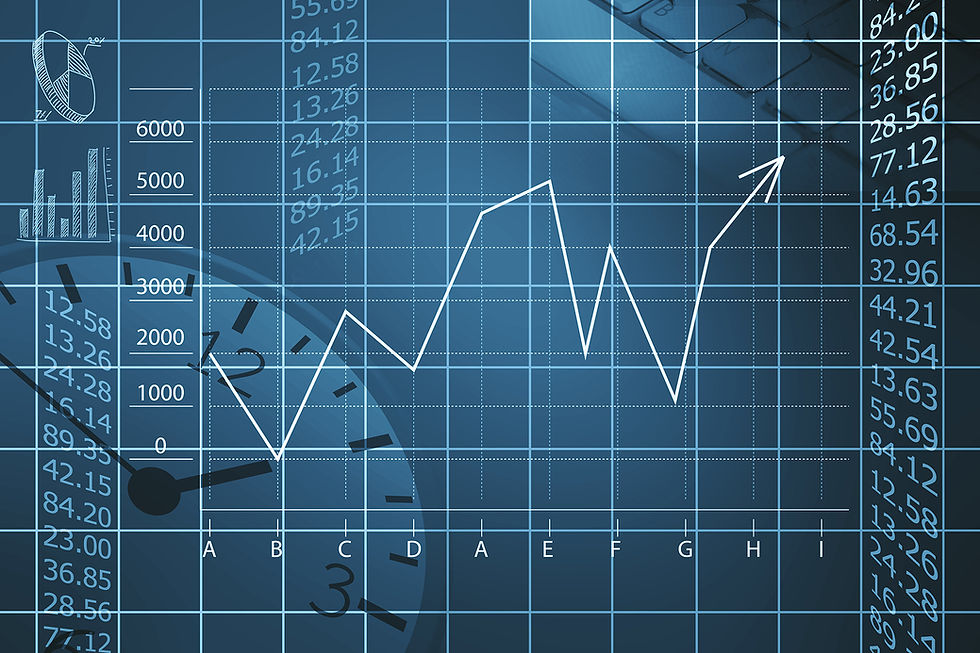Risk and Reward
- Clint Cannon,CFA
- Dec 7, 2018
- 3 min read
Updated: Mar 21

Volatility or big moves in the stock and bond market have been occurring regularly over the past few months. We don’t seem to mind the big moves when they are pointed in a positive direction – it’s the big moves with a negative sign in front of the number that causes us consternation. Given the big moves in the financial markets and that they have often been of the negative variety lately, it is useful to step back a bit and look at volatility or risk associated with returns for a few different types of investments.
To frame this discussion, we are going to look at the average rate of return for three different types of investments: Stocks – using the S&P 500 Index, Intermediate Bonds – using the Bloomberg Barclays U.S. Aggregate Bond index and
Money Market rates of return. Further, we will look at the annual return for each of the investments over the span of 31 years, 1987 – 2017.
Let’s start with stocks. The average total rate of return for stocks, using the S&P 500 index from 1987 – 2017 is 11.49%. the highest return was 37.60% in 1995 and yes, you guessed it, -38.28% in 2008. During this 31-year period, there were five years in which stocks had negative returns versus 26 years of positive returns; that means nearly 84% of the time a positive return occurred; not bad odds of having good things happen to your investments.
Looking at bonds – using the index noted above – the average return for the 31 years was 6.40%. the best rate of return occurred in 1995 at 18.50%; while the worst year was in 1994 with a return of
-2.90%. Only three times during this 31-year span did the bond index deliver negative returns. The odds were even more in your investment favor with a positive outcome over 90% of the time.
Finally, the average rate of return for a money market fund was 3.33% over the past 31 years. The high-water mark was 8.03% in 1989 with a low of .01% on 2010. The good news for money market investors is there were no negative return years; however, since 2009, the returns have been less than .50% on an annual basis and often have required a microscope to even find the return.

Returns are part of the investment story; but, without considering the risk or amount of volatility the tale is not complete. One of the measures of risk is took at the swings around the average rate of return – in statistical terms we call this the standard deviation about the mean or average. Stocks as you might expect have the highest risk of the three investments we have looked at with a standard deviation of 17.36%. Bonds are next with a standard deviation of 4.92% and finally money market risk is at 2.55%. It is easy to see the investment truism that higher rewards are accompanied by higher risks.
The past 31 years have provided investors some of the very best periods of sustained returns and some of the very worst years of returns on an historical basis. But, what has been consistent is that investments tend to return to their average rate of returns; be that from a low or a high rate of return. Negative rates of returns always test our investment capacity; however, it is imperative to not let the negative numbers cause us to make emotional decisions we will come to rue at a later date.
Best Wishes for a Happy Holiday Season!




Comments